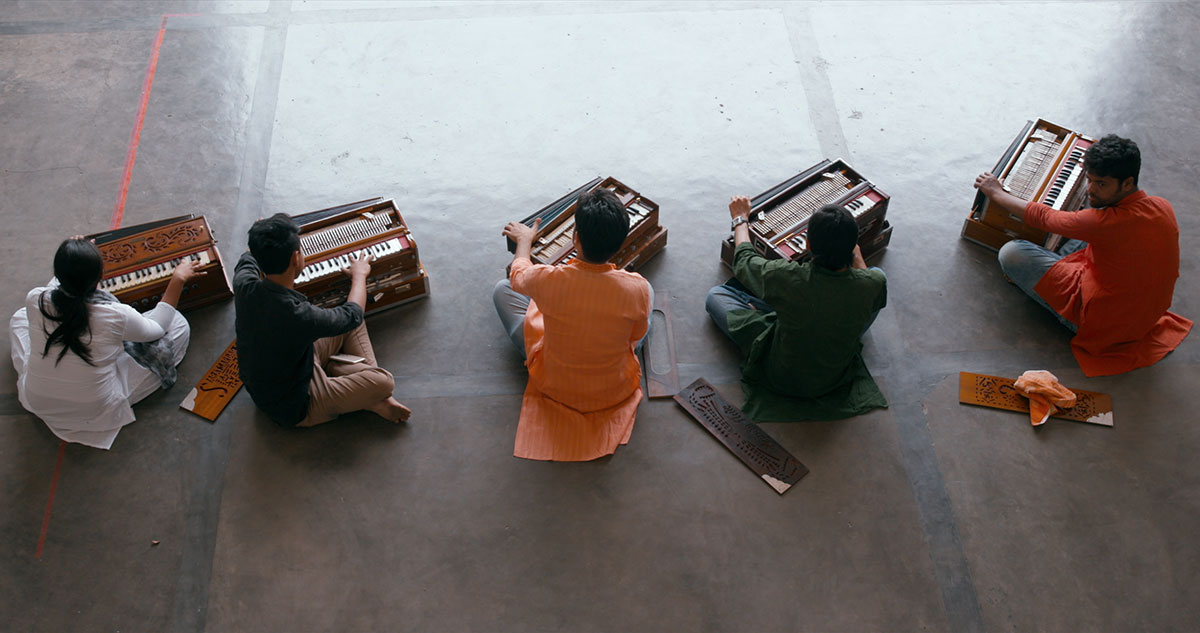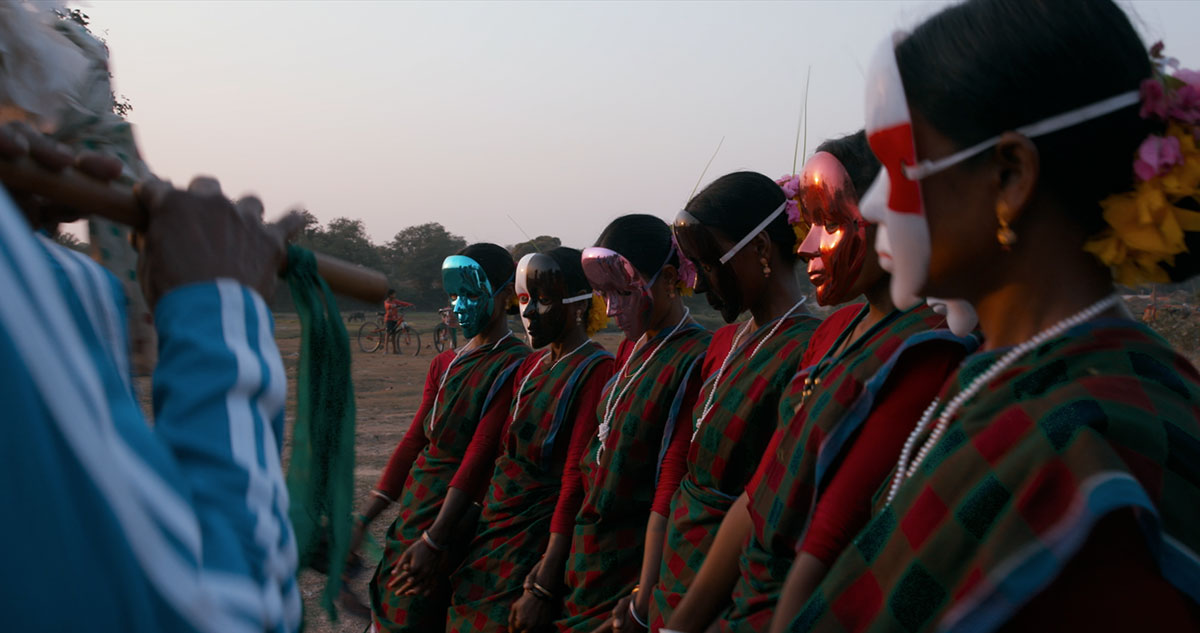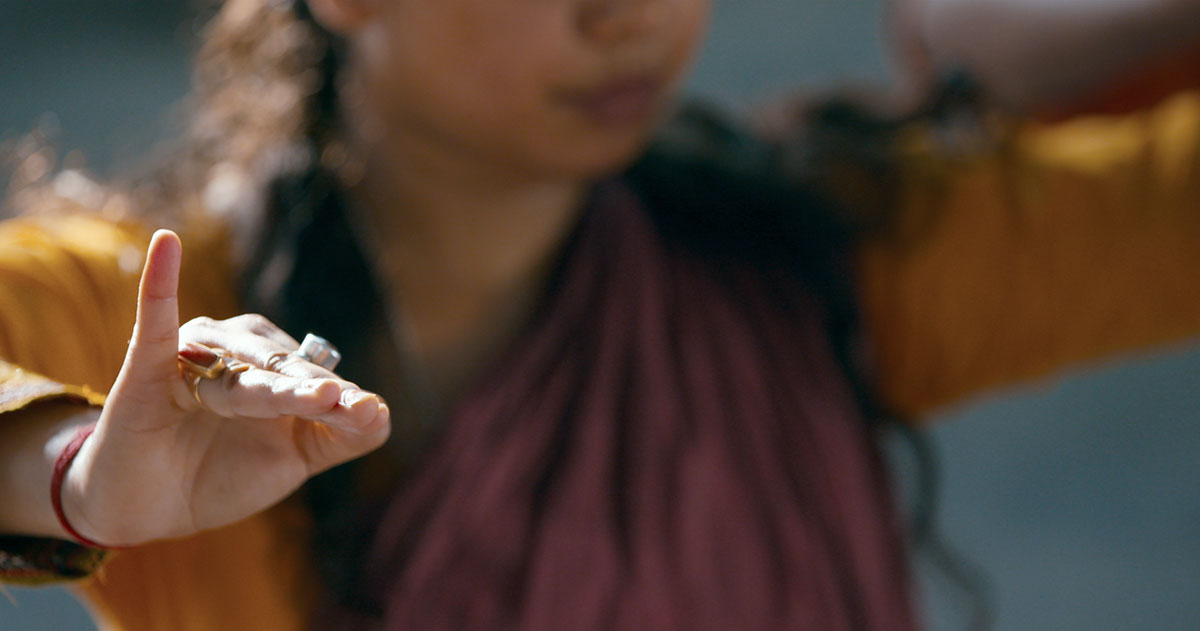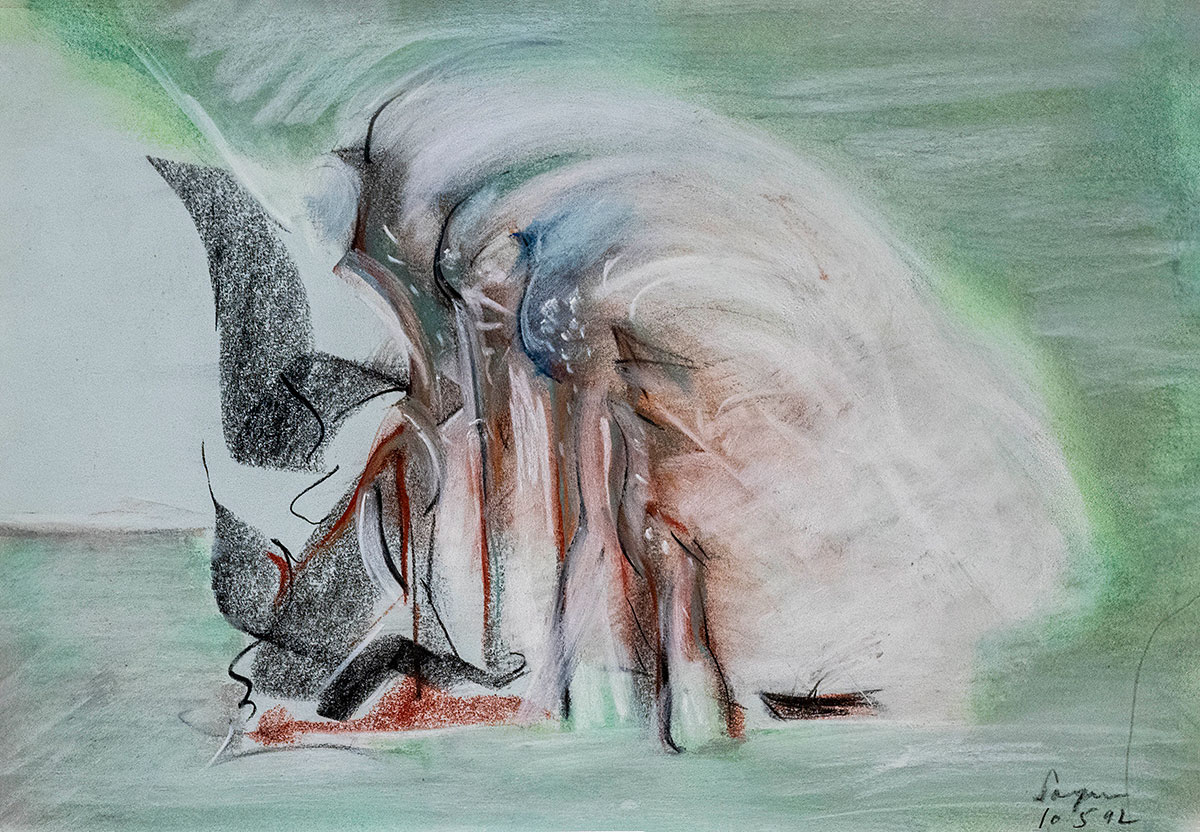PRESENTATION: Otolith Group-O Horizon
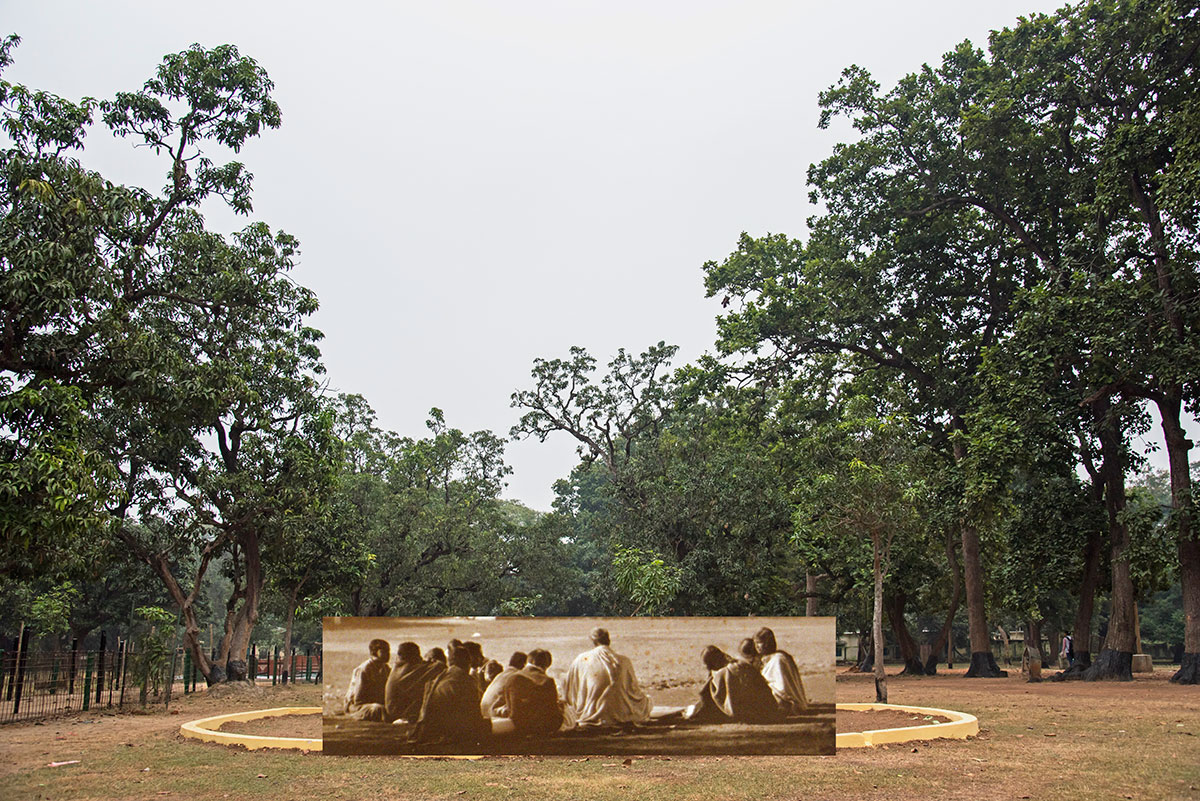 The Otolith Group was founded in 2002 by Anjalika Sagar and Kodwo Eshun. Its work is research based and spans the moving image, audio, performance, installation, and curation. It incorporate film making and post-lens-based essayistic aesthetics that explore the temporal anomalies, anthropic inversions, and synthetic alienation of the posthuman, the inhuman, the non-human, and the complexity of the environmental conditions of life we all face.
The Otolith Group was founded in 2002 by Anjalika Sagar and Kodwo Eshun. Its work is research based and spans the moving image, audio, performance, installation, and curation. It incorporate film making and post-lens-based essayistic aesthetics that explore the temporal anomalies, anthropic inversions, and synthetic alienation of the posthuman, the inhuman, the non-human, and the complexity of the environmental conditions of life we all face.
By Dimitris Lempesis
Photo: Guggenheim Museum Bilbao
Otolith Group present the video installation “O Horizon” a major work depicting the Visva Bharati school in Santiniketan (West Bengal, India), founded by the writer, educator, social reformist, and Nobel laureate Rabindranath Tagore in 1921. The work was commissioned by Bauhaus Imaginista and co-produced with the Rubin Museum, with kind support of Project 88 and encourages us to reflect on the interaction of nature, culture and agriculture, and the urgent need to heal our planet. Guiding India toward cultural independence and transformation, Tagore also anticipated some of the key issues in our globalized world today: the risks associated to climate change, the threat of nationalist and religious extremism and the importance of intergenerational transmission. Situated at the center of the exhibition, “O Horizon” elides the terms of documentary at its most lyrical, discursive and operatic. The camera guides us through dances, rehearsals, and rituals; indoor and outdoor classes; microphones record the mystical songs of Kabir, epic poetry; conversations and plays; lenses capture animal gazes and vegetal depths in silence. Poetic recitation and performance alternate with observations of the flora, scholarly dialogues, and panoramic perspectives. Murals and public sculptures, emblems and allegories of Santiniketan’s aesthetic modernity, are observed in detail, while digital screens and mobile phone apps reappear as props, gadgets and companions in the daily routines and stylized rituals of campus life. Tagore’s environmental vision was key to his foundation of Visva Bharati as a place of confluence for arts and crafts in connection with a pedagogy of the Earth. Culture and agriculture converge in Tagore’s efforts to reinvigorate the land by bringing fertile soil from nearby areas, thereby reintroducing multiple species of plants and “terraforming” Santiniketan into the fertile terrain it became years later. A crucial stage in this transformation emerges at the uppermost layer of soil in which the decomposition and transformation of leaves, grass, fruit, and animal debris form the surface layer agronomists name the “O Horizon” from which the entire film project takes its title. The Otolith Group considers the poetic and political underpinnings of such a fragile and dynamic space as a crucial element for Tagore’s ethos which continues to inform a contemporary thought that is both ecologic and cosmopolitical. Extensions of this thinking become visible through a series of photomontages titled “Santiniketan Studies” , a selection of which is presented by the exhibition entrance. These pictures present the multiple dimensions of various enclaves in the campus in which multiple time periods coexist with the latency of historical events to evoke the emotional texture of every site. Trees are recurring motifs throughout, enduring presences at the center of an outdoor circle in the characteristic “tree schools” of Tagore’s system, as manifestations of the regenerative agronomy practiced at Santiniketan since its inception. Also exhibited in this space is a selection of works on paper by the artist Vidya Sagar (1938-2016), father of Anjalika Sagar, and collaborator in various films by The Otolith Group, to whom “O Horizon” is dedicated. Sagar’s work is exemplary of Visva Bharati’s influence Santiniketan’s on various generations of artists in modern and contemporary India. Sagar’s Tantric abstractions use sensuous outlines and delicate pastel hues to generate moments of visual musicality that reinterpret the patterns of contextual Indian iconographies resonating throughout the allusive poetics of “O Horizon”.
Photo: The Otolith Group, Santiniketan Studies (A Century Before Us II): Tapovan Study Circle, 2018, Digital collage on Somerset Museum Rag paper, Courtesy of the artists, © The Otolith Group
Info: Curator: Manuel Cirauqui, Guggenheim Museum Bilbao, Guggenheim Bilbao, Abandoibarra et.2, Bilbao, Spain, Duration: 23/6-2/10/2022, Days & Hours: Tue-Sun 11:00-19:00, www.guggenheim-bilbao.eus/en
